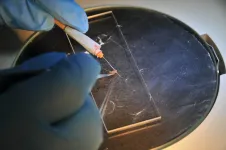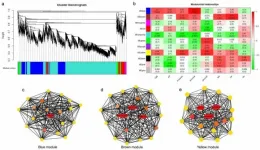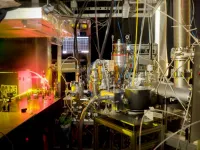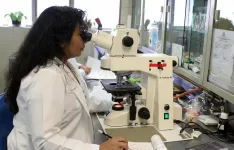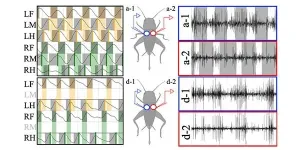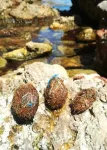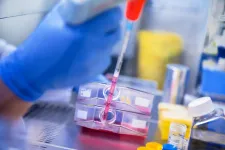(Press-News.org) A vector refers to an organism that carries and transmits an infectious disease, as mosquitoes do malaria.
Lead compounds are chemical compounds that show promise as treatment for a disease and may lead to the development of a new drug.
Antiplasmodial lead compounds are those that counter parasites of the genus Plasmodium, which is the parasite that infects mosquitoes and causes malaria in people.
The study findings were published in Nature Communications on 11 January 2021, at a time when malaria incidence generally peaks after the holiday season.
MOSQUITO INFECTION EXPERIMENT CENTRE
Professor Lizette Koekemoer, co-director of the WRIM and the National Research Foundation SARChI Chair in Medical Entomology and Control, and an honorary member of the Centre for Emerging Zoonotic and Parasitic Diseases, National Institute for Communicable Diseases, co-authored the paper.
Koekemoer and her team at WRIM established a unique mosquito malaria infection centre in the Faculty of Health Sciences at Wits University, where the mosquito transmission blocking experiments took place.
"The WRIM infection centre is the only facility in South Africa and in the southern African region that can artificially infect mosquitoes with the human malaria parasite," says Koekemoer. "The infection centre provided the high level of expertise required to infect mosquitoes with the human malaria parasite, Plasmodium falciparum, and allowed for this unique study to be done."
CURATING CHEMICALS TO COMBAT TRANSMISSION
Drugs are used to control human malaria but resistance to these drugs develops rapidly. Furthermore, the drugs mainly target just one stage of the parasite's life cycle and are not good candidates for blocking transmission.
To expand drug suitability for malaria elimination strategies, drugs need to be able to act as a chemotype [a chemically distinct entity in a plant or microorganism] that blocks both human-to-mosquito transmission and mosquito-to-human transmission.
Koekemoer, with WRIM colleagues and co-authors, Erica Erlank, Luisa Nardini, Nelius Venter, Sonja Lauterbach, Belinda Bezuidenhout, and Theresa Coetzer conducted specialised experiments to measure the reduction of infection in the mosquitoes as well as the "killing effect" [endectocide effect] in the vectors.
The scientists screened 400 chemical compounds available in the "Pandemic Response Box", which is supplied by Medicines for Malaria Venture (MMV), to identify the compounds that are most effective across the life stages of the parasite that generally take place in the human host.
The Pandemic Response Box contains 400 diverse drug-like molecules active against bacteria, viruses or fungi. It is available free of charge provided that researchers share data resulting from research on the molecules in the box with the public within 2 years of its generation.
The compounds that showed a good effect on late-stage gametocytes (those circulating in the blood and being transferred to a mosquito when it feeds on an infected human) were evaluated for their transmission-blocking potential.
Mosquitoes were fed infected blood that was treated either with or without the compound. After eight to 10 days, the mosquito guts [stomach] were removed and the number of parasites (called oocysts) counted and compared against those mosquitoes that received only an infected blood meal without treatment.
SEEKING THE SPARK
Mass drug administration (MDA) is the administration of antimalarial drugs to target the parasite reservoir in humans, without necessarily testing whether those people are carrying the parasite that causes malaria.
The World Health Organization (WHO) recommends MDA for the elimination of the Plasmodium falciparum malaria parasite. However, the effort and cost required to implement MDA on a large scale is prohibitive.
Identifying the potential compounds for MDA is amongst the greatest hurdles to overcome and is therefore an intense research pipeline of development.
By leveraging the scarce skills and expertise available in different research institutes such as the WRIM, this study published in Nature Communication established the first such pipeline screening in South Africa.
This opens the door for screening additional chemistry effectively and rapidly to contribute towards the elimination of malaria.
TOWARDS ZERO TRANSMISSION TARGETS
Although there were still an estimated 229 million malaria cases in 2019 and 409 000 deaths during this period (compared to some 88 million Covid-19 cases reported), the successes of reducing malaria cases over the past two decades has inspired many countries to commit to eliminating transmission altogether.
To date, the WHO has certified 38 countries and territories malaria-free. In southern Africa, eight countries - including South Africa - have made the elimination of malaria a policy goal.
However, progress towards eliminating transmission has numerous challenges and new drugs and insecticides are urgently needed to combat the development of drug resistance in the parasite and the vector.
The WRIM and studies like these are pioneering novel approaches. However, it is still a long road between the laboratory and field operations. But the first steps have been taken.
INFORMATION:
Recently, the innovation project watermelon and melon cultivation and physiology team of Zhengzhou Fruit Research Institute has made new progress in the metabolism regulation of sugar and organic acid in watermelon fruit. The changes of sugar and organic acid during the fruit development were analyzed and the key gene networks controlling the metabolism of sugar and organic acid during the fruit development were identified. These results provided a theoretical basis for watermelon quality breeding, which had important scientific significance for the development of watermelon industry and the improvement of watermelon breeding level in China. The related research results were published in the journals of Horticulture Research and Scientia Horticulturae.
The ...
Research led by the University of Birmingham and Birmingham Women's and Children's NHS Foundation Trust has revealed new insight into the biological mechanisms of the long-term positive health effects of breastfeeding in preventing disorders of the immune system in later life.
Breastfeeding is known to be associated with better health outcomes in infancy and throughout adulthood, and previous research has shown that babies receiving breastmilk are less likely to develop asthma, obesity, and autoimmune diseases later in life compared to those who are exclusively formula fed.
However, up until now, the immunological mechanisms responsible for these effects have been very poorly understood. In this new study, ...
Aerosols are suspensions of fine solid particles or liquid droplets in a gas. Clouds, for example, are aerosols because they consist of water droplets dispersed in the air. Such droplets are produced in a two-step process: first, a condensation nucleus forms, and then volatile molecules condense onto this nucleus, producing a droplet. Nuclei frequently consist of molecules different to those that condense onto them. In the case of clouds, the nuclei often contain sulphuric acids and organic substances. Water vapour from the atmosphere subsequently condenses onto these nuclei.
Scientists led by Ruth Signorell, Professor at the Department of Chemistry and Applied ...
Leading cancer experts at the University of Birmingham have solved a long-standing question of how various types of mutations in just one gene cause different types of diseases.
A team of scientists at the University's Institute of Cancer and Genomic Sciences, led by Professor Constanze Bonifer, studied a gene known as RUNX1, which is responsible for providing instructions for the development of all blood cells and is frequently mutated in blood cancers.
The results of their research has shown that the balance of cells types in the blood is affected much earlier than previously thought, which is particularly important for families that carry ...
Adaptability explains why insects spread so widely and why they are the most abundant animal group on earth. Insects exhibit resilient and flexible locomotion, even with drastic changes in their body structure such as losing a limb.
A research group now understands more about adaptive locomotion in insects and the mechanisms underpinning it. This knowledge not only reveals intriguing information about the biology of the insects, but it can also help to design more robust and resilient multi-legged robots that are able to adapt to similar physical damage.
The insect nervous system is comprised of approximately 105 to 106 neurons. Understanding ...
Posidonia oceanica seagrass -an endemic marine phanerogam with an important ecological role in the marine environment- can take and remove plastic materials that have been left at the sea, according to a study published in the journal Scientific Reports. The article's first author is the tenure-track 2 lecturer Anna Sànchez-Vidal, from the Research Group on Marine Geosciences of the Faculty of Earth Sciences of the University of Barcelona (UB).
The study describes for the first time the outstanding role of the Posidonia as a filter and trap for plastics in the coastal areas, and it is pioneer ...
Both past and present-day scientists have suspected the intestines of playing a role in various diseases. Present-day studies focus on the intestinal flora's role in physical diseases such as diabetes and overweight, while others seek to establish a connection between the intestinal flora and e.g. autism, schizophrenia and depression. But even modern-day scientists have difficulties studying the around 500-1000 different species among the approx. 100 billion active bacteria in our intestines.
Therefore, researchers from the University of Copenhagen have developed a ground-breaking technique that ...
Roughly 8,200 years ago, the island of Yuzhniy Oleniy Ostrov in Lake Onega in the Republic of Karelia, Russia, housed a large burial ground where men, women and children of varying ages were buried. Many of the graves contain an abundance of objects and red ochre, signifying the wish to ensure the comfort of the buried also after death. Pendants made of elk incisors were apparently attached to clothing and accessories, such as dresses, coats, cloaks, headdresses and belts. Although no clothing material has been preserved, the location of the elk teeth sheds light on the possible type of these outfits.
A people of grooved elk tooth pendants
A study headed by archaeologist Kristiina Mannermaa, University of Helsinki, aimed to determine who ...
Bacteria are likely triggering greater melting on the Greenland ice sheet, possibly increasing the island's contribution to sea-level rise, according to Rutgers scientists.
That's because the microbes cause sunlight-absorbing sediment to clump together and accumulate in the meltwater streams, according to a Rutgers-led study - the first of its kind - in the journal Geophysical Research Letters. The findings can be incorporated in climate models, leading to more accurate predictions of melting, scientists say.
"These streams can be seen all over Greenland ...
In patients with bladder cancer, chemotherapy effectiveness is partially determined by the body's immune system response to the malignancy. This is the conclusion of research conducted by a team of scientists from Charité - Universitätsmedizin Berlin and the Berlin Institute of Health. The findings, which have been published in Science Translational Medicine*, can be used to predict treatment success and may increase survival in patients with bladder cancer.
Bladder cancer is one of the ten most common types of cancer in Germany, and one of the five most common cancers in men. Nationwide, the disease affects approximately 30,000 people a year. The risk of the cancer ...
